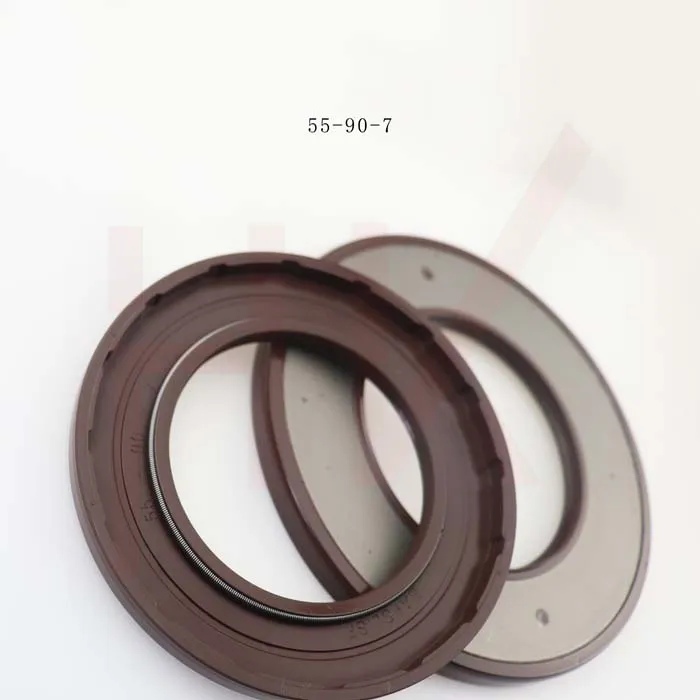ਨਵੰ. . 27, 2024 08:47 Back to list
Choosing the Right Oil Seal for Your Pump Application
Understanding Oil Seals for Pumps A Comprehensive Guide
Oil seals are critical components in various machinery, including pumps. They play a crucial role in sealing and preventing the leakage of lubricants, ensuring efficient operation and extending the lifespan of the pump. This article delves into the importance of oil seals, their design, functionality, and considerations for selecting the right oil seal for your pump applications.
What is an Oil Seal?
An oil seal, also known as a shaft seal, is a mechanical component that fills the annular space between a rotating shaft and a stationary housing. It prevents the escape of lubricant while also preventing the ingress of contaminants such as dust, dirt, and moisture. Oil seals are commonly made from materials like rubber, elastomers, or thermoplastics, chosen based on the specific application requirements.
Importance of Oil Seals in Pumps
In pump systems, oil seals are vital for several reasons
1. Leak Prevention By effectively sealing the area between the rotating shaft and the pump casing, oil seals prevent the leakage of oil or lubrication fluids. This not only conserves the necessary lubricants but also reduces the environmental impact by preventing contamination.
2. Contaminant Protection Oil seals protect the internal components of the pump from abrasives and contaminants. Dirty environments can introduce particulates that may cause wear and tear on the pump’s moving parts, leading to premature failure. An effective oil seal acts as a barrier, enhancing the reliability of the pump.
3. Performance Optimization Proper sealing minimizes friction between moving parts, which is crucial for maintaining energy efficiency. If oil leaks occur, the pump may require additional energy to operate, resulting in higher operational costs.
4. Longevity of Components Pumps are often costly investments. By preventing lubricant leaks and protecting against contaminants, oil seals contribute to the longevity of pumps and their internal components, reducing maintenance costs and downtime.
Types of Oil Seals
There are several types of oil seals, each designed for specific applications and environments
. The most common types include1. Single-Lip Oil Seals These are designed with one sealing lip that makes contact with the shaft. They are typically used in applications where one side needs sealing, and they work well in moderate pressure and contamination environments.
oil seal for pump

2. Double-Lip Oil Seals Featuring two sealing lips, double-lip oil seals offer enhanced protection against contaminants and are effective in applications with higher levels of external dirt or humidity.
3. Spring-Loaded Oil Seals These seals come with a spring positioned behind the sealing lip, which exerts pressure against the shaft. This design is beneficial in applications with fluctuating pressure, providing enhanced sealing performance and reducing the chances of lubricant leakage.
4. Flanged Oil Seals With a flanged design, these seals are suited for easy installation and can help guide alignment while sealing the pump. They are often employed in larger pumps and heavy machinery.
Key Considerations for Selecting Oil Seals
When selecting an oil seal for pumps, consider the following factors
1. Temperature and Pressure Ratings Ensure that the oil seal material can withstand the operational temperatures and pressure levels of your specific pump application.
2. Chemical Compatibility The oil seal material must be compatible with the lubricating fluids and any other chemicals present in the environment to prevent degradation.
3. Shaft Size and Tolerance Accurately measure the shaft diameter and check the manufacturer's specifications for tolerance levels to select a seal that fits correctly and maintains optimal sealing properties.
4. Operating Conditions Assess the environment in which the pump operates. Factors such as humidity, dust, and potential exposure to corrosive substances should influence your choice of oil seal.
5. Manufacturer Recommendations Consider the pump manufacturer’s recommendations for oil seal types and specifications. OEM (Original Equipment Manufacturer) seals often provide the best compatibility and performance.
Conclusion
Oil seals are essential for the efficient and reliable operation of pumps. Their role in preventing leaks and protecting against contaminants cannot be overstated. By understanding the various types, functions, and selection criteria of oil seals, maintenance professionals and engineers can choose the right components to enhance pump performance and longevity. Proper maintenance and timely replacement of oil seals are critical practices that can lead to increased efficiency and reduced operational costs in pump systems.
-
Unlocking the Potential of Hydraulic Systems with Essential Sealing Solutions
NewsAug.06,2025
-
Unleash the Power of Your Hydraulic Systems with Our Premium Seal Kits
NewsAug.06,2025
-
Specialized Hydraulic Seal Kits for Breakers, Pistons, and Presses
NewsAug.06,2025
-
Revitalize Hydraulic Systems with Premium Repair and Seal Kits
NewsAug.06,2025
-
Fortify Your Cylinders with Premium Sealing Solutions
NewsAug.06,2025
-
Elevate Hydraulic System Reliability with Specialized Seal Kits
NewsAug.06,2025
-
TCN Oil Seal Metal Ring Reinforcement for Heavy Machinery
NewsJul.25,2025
Products categories
















